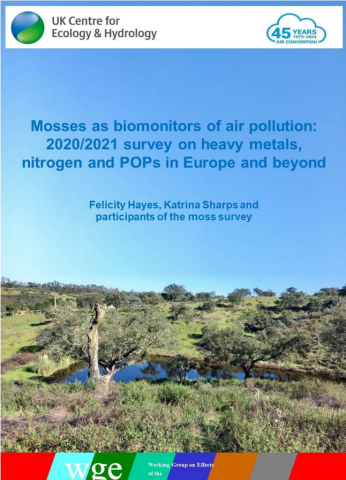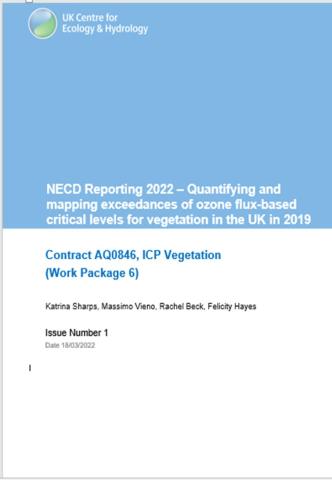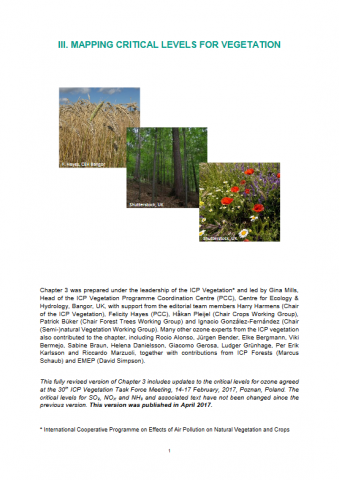Background
In 1987, the International Cooperative Programme on Effects of Air Pollution on Natural Vegetation and Crops (ICP Vegetation, formerly ICP Crops) was established to consider the underlying science for quantifying damage to plants caused by air pollutants, particularly ozone. In 2001, the ICP Vegetation took over responsibility for coordinating the European heavy metals biomonitoring network using mosses (‘European Heavy Metals in Mosses Survey’) from the Nordic Council of Ministers. In 2005, the nitrogen concentration in mosses was also included, and in 2010, persistent organic pollutants (POPs) were included for the first time in a few countries. Over 250 scientists from ca. 50 countries participate in the ICP Vegetation Programme. Participants meet each year at a Task Force Meeting to discuss recent results and the future development of the programme.
The programme is part of the activities of the Working Group on Effects (WGE) under the Convention on Long-range Transboundary Air Pollution (LRTAP Convention), which covers the UNECE (United Nations Economic Commission for Europe) region of Europe and North-America. The ICP Vegetation has also established links with countries outside the ECE region, for example in Asia and Africa. The ICP Vegetation is one of seven ICPs and Task Forces investigating effects of air pollutants on waters, materials, forests, ecosystems, health, and mapping their effects in the ECE region. International cooperation to control emission and formation of air pollution is strengthened by the LRTAP Convention. Its Protocols commit countries to reducing pollutant emissions by specific target years. Results from the ICPs and Task Forces are used in both the development of these Protocols, and in monitoring their success in reducing the impacts of air pollutants on health and the environment.



